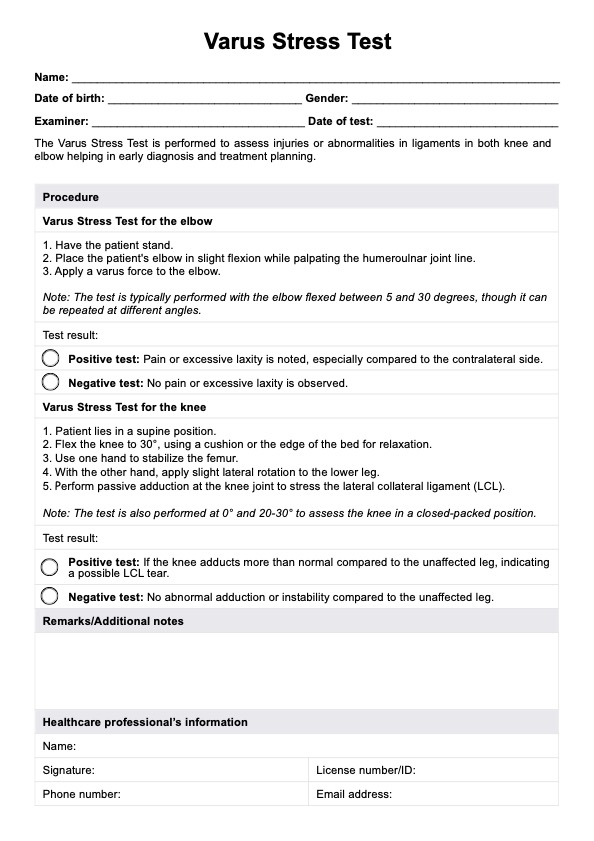The cruciate ligament works with other knee structures to stabilize the joint. If the test shows instability, it might suggest combined ligament injuries, including possible cruciate ligament involvement.

Varus Stress Tests
Conduct and record test results for a Varus Stress Test with our comprehensive step-by-step PDF guide and template. Access this for free!
Varus Stress Tests Template
Commonly asked questions
The external rotation recurvatum test is primarily used to diagnose posterolateral corner injuries, which can be difficult to identify. This test involves assessing the knee's ability to tolerate external rotation and hyperextension. In contrast, the Varus Stress Test specifically evaluates the integrity of the lateral collateral ligament by applying a specific inward force or knee flexion to the knee joint and observing for any abnormal movement or pain indicating ligament injury. It's part of the broader valgus and varus stress tests, offering a comprehensive evaluation of joint health.
Varus laxity refers to the looseness or instability of the knee or elbow on the outer side (lateral side). It occurs when the LCL in the knee or elbow is damaged or weakened, causing excessive movement or abnormal shifting of the joint during stress tests.
EHR and practice management software
Get started for free
*No credit card required
Free
$0/usd
Unlimited clients
Telehealth
1GB of storage
Client portal text
Automated billing and online payments











